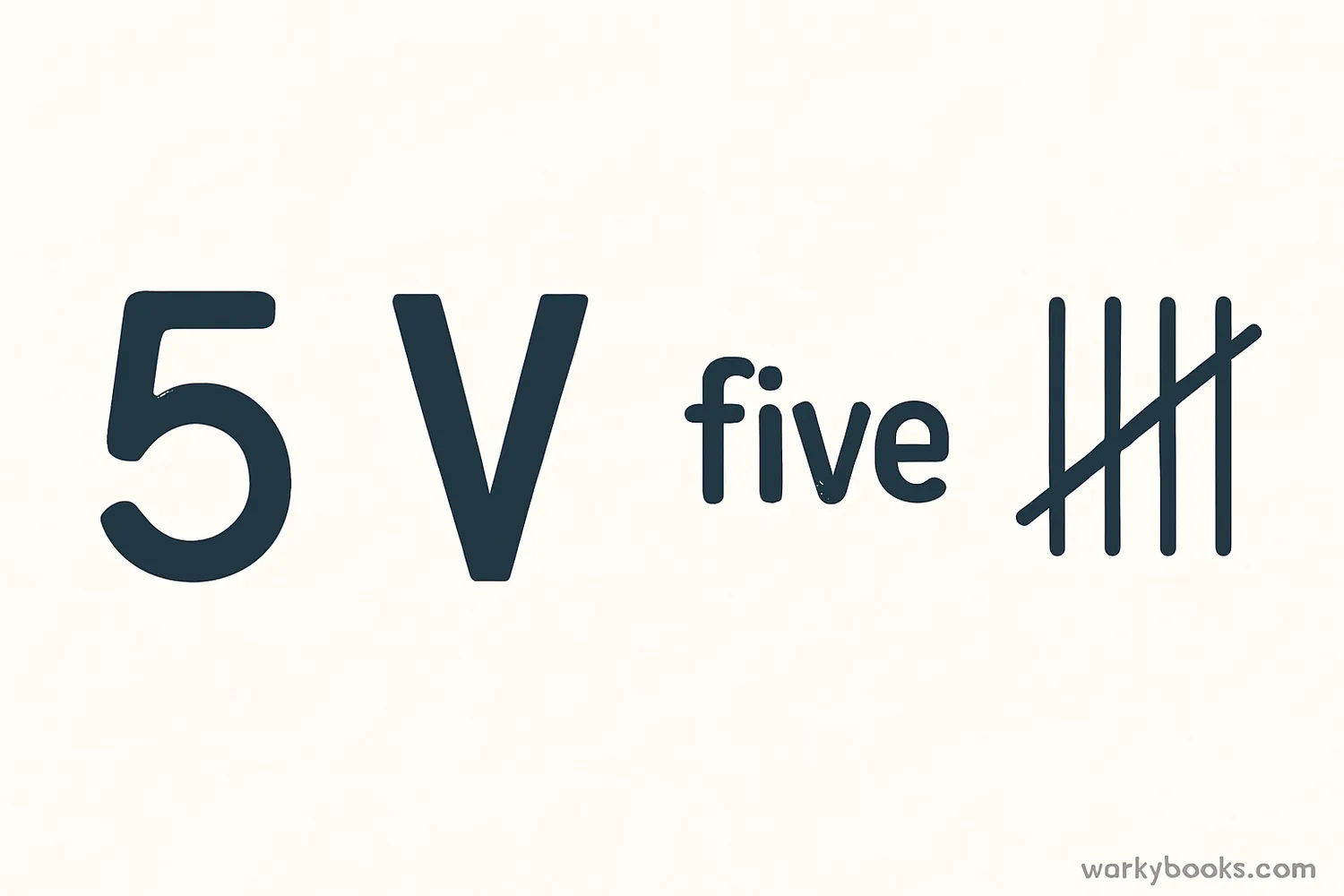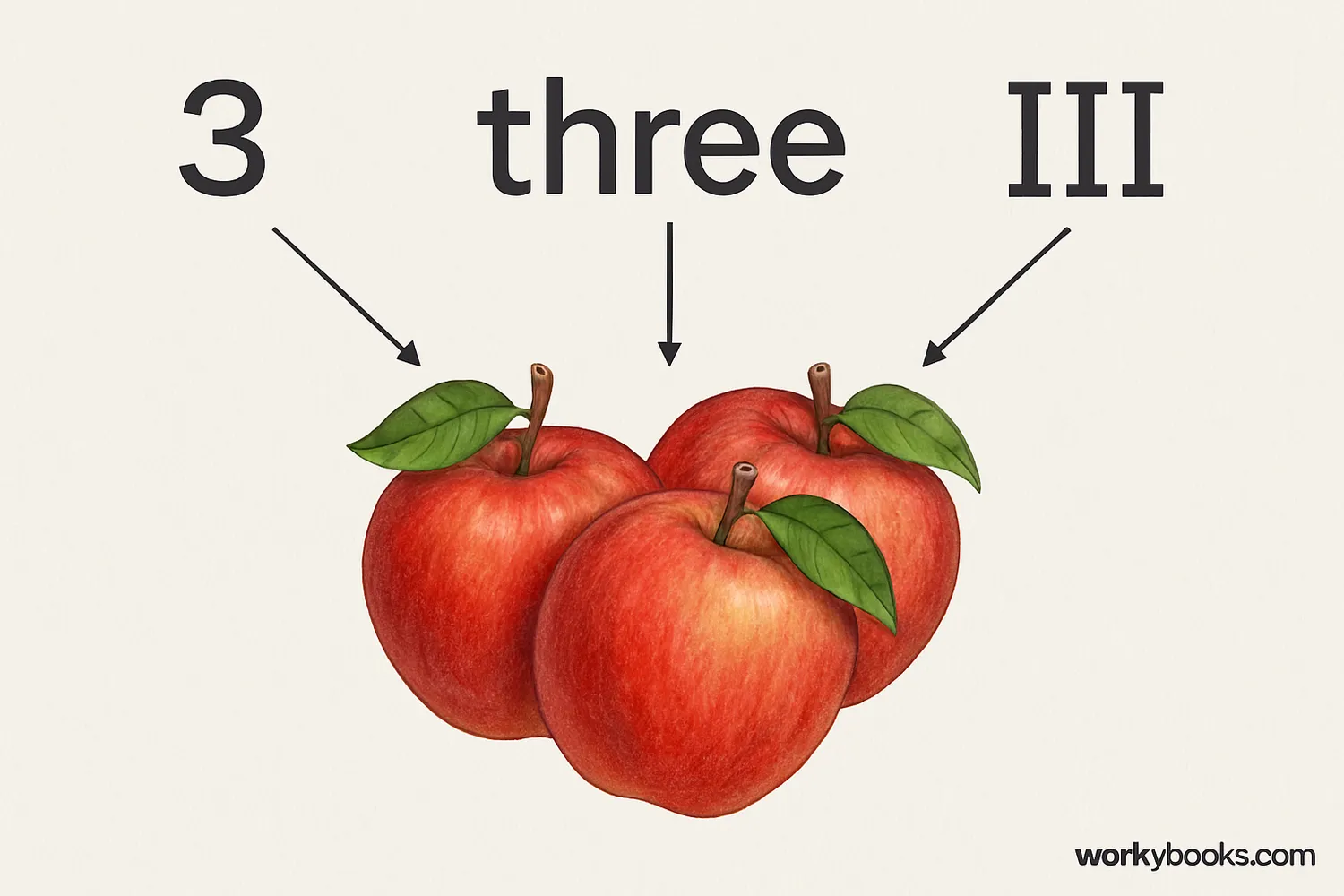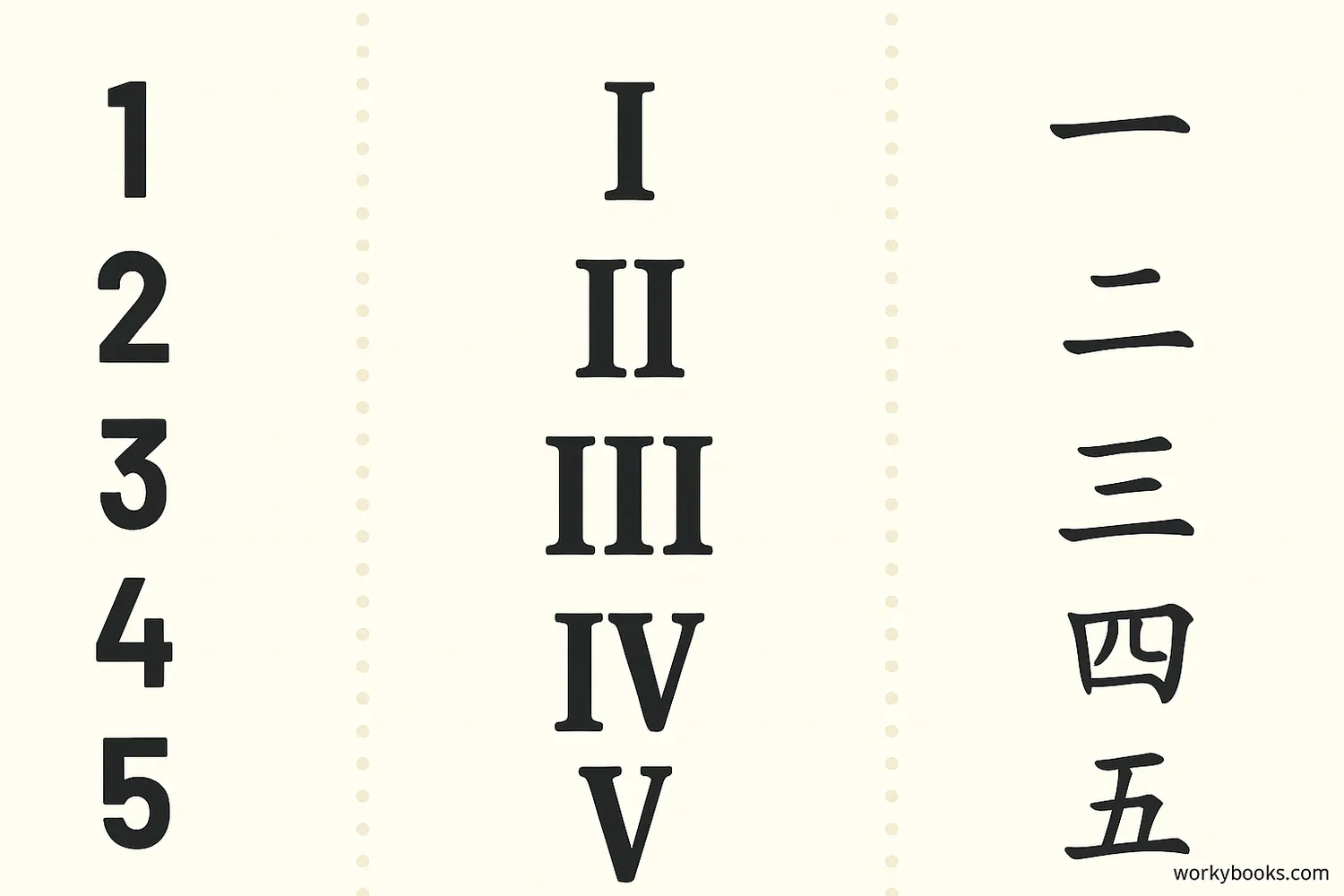Numeral - Definition, Examples, Quiz, FAQ, Trivia
Understanding How Numbers Are Written and Represented
What is a Numeral?

A numeral is a symbol or name that stands for a number. Think of it as the written representation of a number!
When you see the symbol "5", the word "five", or the Roman numeral "V", these are all numerals that represent the same number. Numerals are how we write down numbers so we can share them, calculate with them, and remember them.
Math Fact!
The word "numeral" comes from the Latin word "numerālis," which means "pertaining to numbers."
Numeral vs Number

Many people use the words "number" and "numeral" interchangeably, but they have different meanings in mathematics:
Number
A mathematical concept representing quantity or value
Numeral
The written symbol that represents a number
Think of it this way: the number is the idea of how many, and the numeral is how we write that idea.
For example, the number of fingers on one hand is five. We can write this number using different numerals: 5, five, V, or 101 (in binary).
Types of Numerals

There are many different types of numerals used around the world and throughout history. Here are some important ones:
Arabic Numerals
0, 1, 2, 3, 4, 5, 6, 7, 8, 9 - The most common system used today
Roman Numerals
I, V, X, L, C, D, M - Used in ancient Rome and still seen today
Word Numerals
one, two, three - Writing numbers as words
Tally Marks
丨, 丿, 十 - Simple marks used for counting
Ordinal Numerals
1st, 2nd, 3rd - Show position or order
Cardinal Numerals
1, 2, 3 - Show quantity or how many
Different cultures have developed their own numeral systems throughout history. The Arabic numeral system (0-9) is the most widely used today because it makes calculations easier with its place value system and the important concept of zero.
Examples of Numerals

We use numerals every day in many different ways. Here are some common examples:
Clocks & Watches
Often use Roman numerals (I, II, III) or Arabic numerals (1, 2, 3)
Calendars
Use numerals to show dates and days of the month
Money
Numerals show amounts on price tags and currency
Sports Jerseys
Players are identified by numerals on their uniforms
Addresses
House numbers help us find specific locations
Phone Numbers
Numerals help us connect with others
Can you think of other places where you see numerals in your daily life? Look around - you'll find them everywhere!
Did You Know?
The Arabic numeral system we use today originally came from India and was adopted by Arabic mathematicians before spreading to Europe.
Numeral Quiz
Test your knowledge with this quiz! Answer all 5 questions to see how much you've learned about numerals.
Frequently Asked Questions
Here are answers to some common questions about numerals:
Math Facts About Numerals
Discover some fascinating facts about numerals and number systems!
The Invention of Zero
The concept of zero as a numeral was developed in India around the 5th century. Before this, most number systems didn't have a symbol for zero, which made advanced mathematics very difficult!
Roman Numeral Challenges
Try adding LXXIV (74) and XIX (19) using Roman numerals! This shows why Arabic numerals with place value became more popular for mathematics - they make calculations much easier.
Arabic Numerals Origin
What we call "Arabic numerals" (0,1,2,3,4,5,6,7,8,9) actually originated in India! They were adopted by Arabic mathematicians who helped spread them to Europe, which is how they got their name.
Computer Numerals
Computers use a binary numeral system with only two digits: 0 and 1. All the numbers, text, and images on your screen are represented using combinations of just these two numerals!





